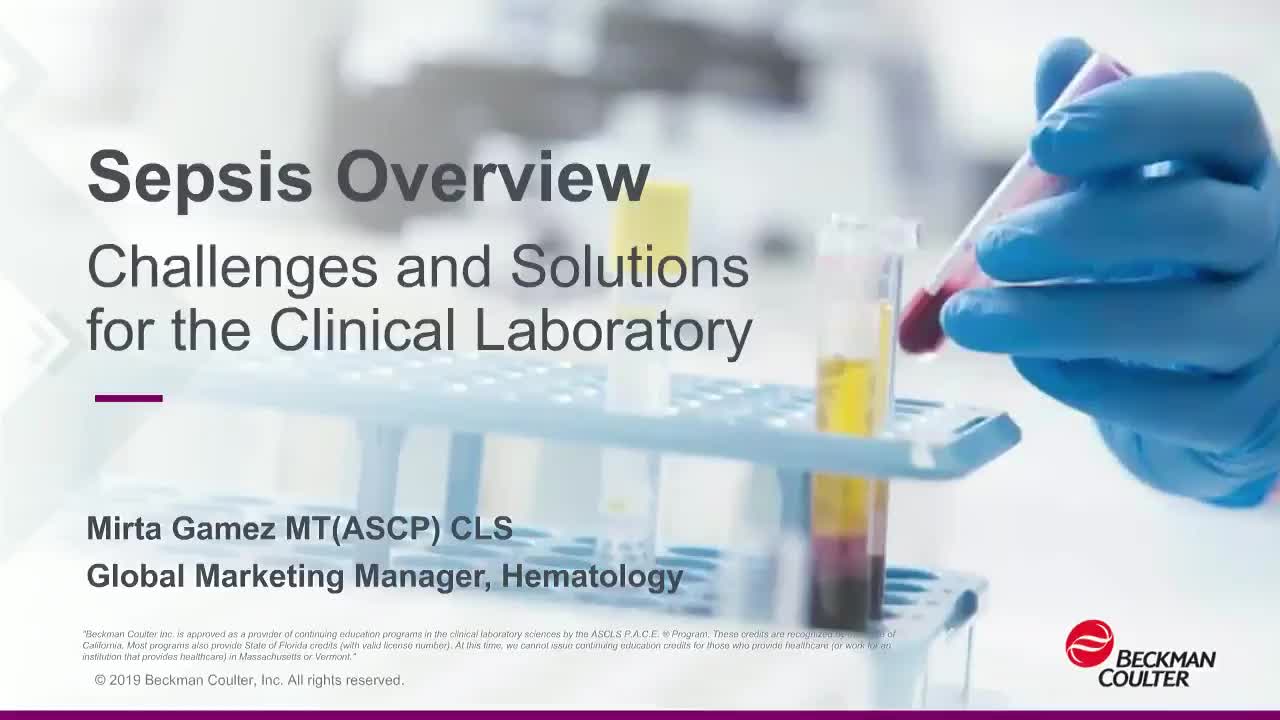Sepsis Overview: Challenges and Solutions for Laboratories
Research shows that early intervention and diagnosis can reduce sepsis-specific mortality. Each hour of delay in the initiation of effective antibiotic administration increases sepsis mortality by almost 8%.5 Identifying sepsis can be very challenging, however.
View this on-demand webinar to hear Mirta Gamez, MT(ASCP), CLS, explore the laboratory’s role in clinical sepsis diagnosis and treatment.
After attending this webinar, you will be able to:
- Articulate the basic etiology of sepsis and its impact on healthcare
- Identify the challenges that affect the rapid diagnosis of sepsis
- Guide how—and when—common sepsis biomarkers are used for detection and monitoring, including:
- C-reactive protein
- Procalcitonin
- Lactate
- Monocyte Distribution Width parameter
- IG (immature granulocyte)
- Advise on the role of the laboratory in sepsis diagnosis and management
Ideal For: Laboratory Technician, Laboratory Manager, Laboratory Director
Presenter: Mirta Gamez, MT(ASCP), CLS
Mirta Gamez attended the University of Arizona, where she obtained degrees in both molecular and cellular biology, and health sciences. Over the span of 20 years, she started, supervised and grew large and small laboratories in the areas of flow cytometry, molecular diagnostics and hematology. After holding a position as a field product technical specialist for Beckman Coulter, Mirta transitioned to the global hematology marketing team, where she assists in developing and marketing instrumentation. Her favorite days are those when she is “back in her element” and “on the tile” with customers.
 English
English


